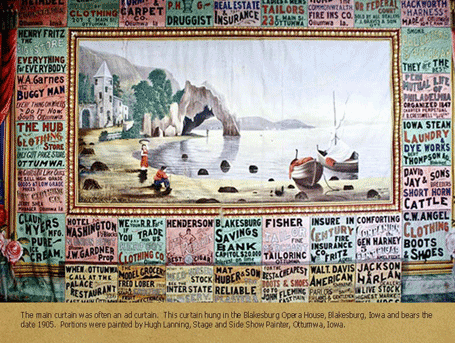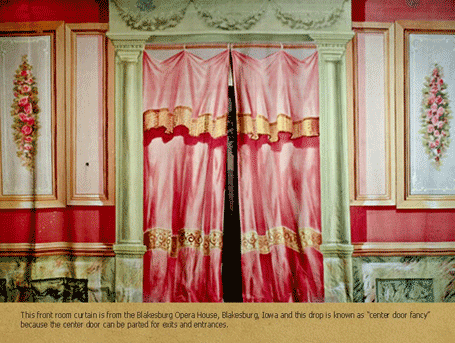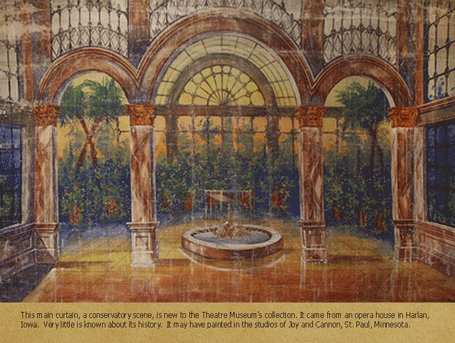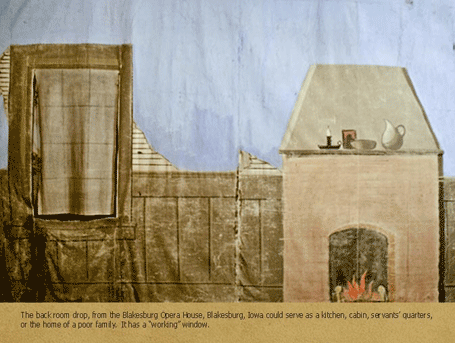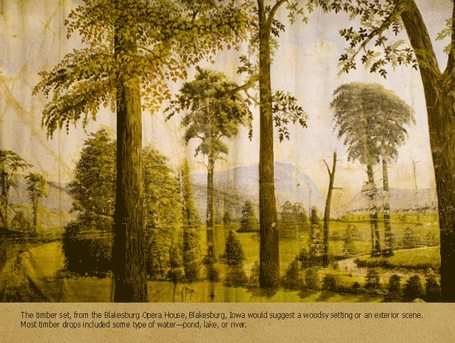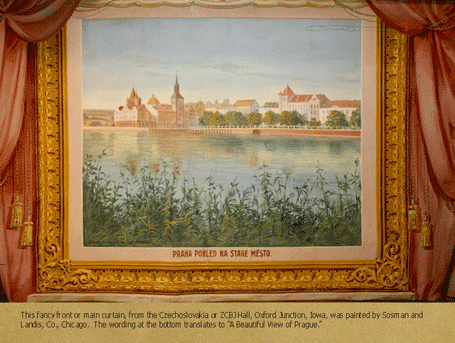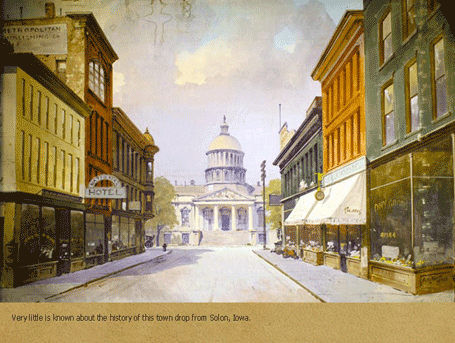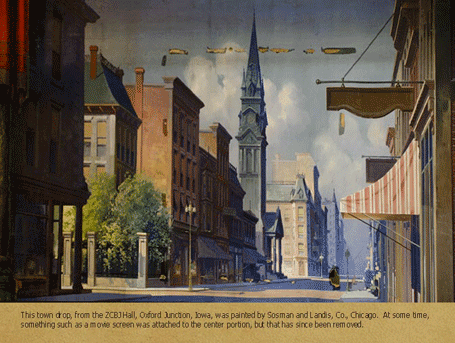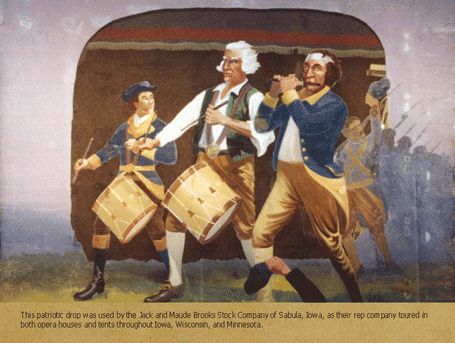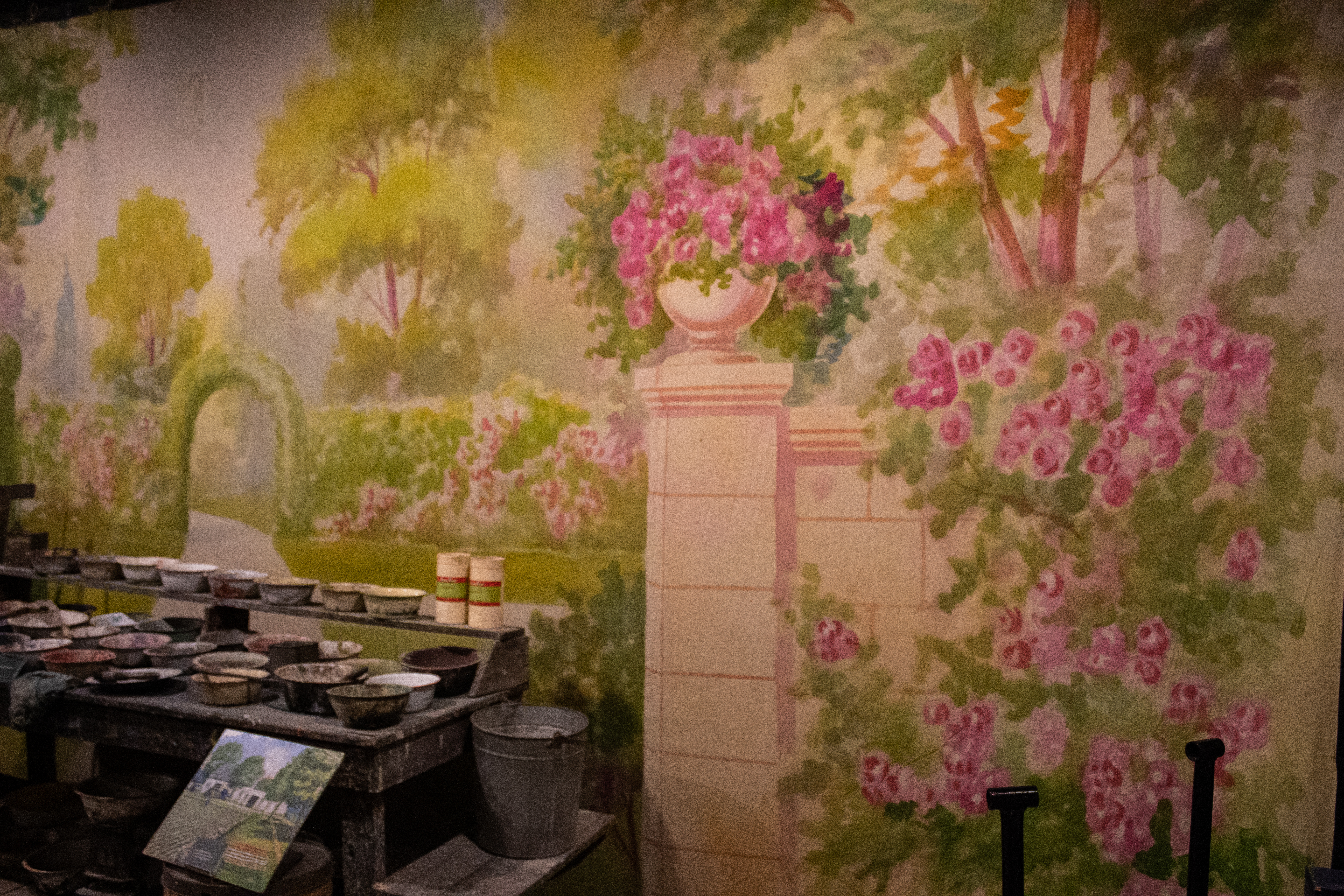
When thousands of towns and villages were founded in the 1800s and 1900s in the United States, one of the first important structures to be erected in many of these communities was the town hall or a place of entertainment. These were often called “opera houses” because to many people the word “theater” had a tarnished reputation. Few of them ever actually housed an opera. They were the places where both local and touring companies would perform. Most of the opera houses had some scenery; many of the traveling companies also provided their own. The Theatre Museum has a collection of scenery—curtains, sets, drops, tormentors, and sketches—on display. “Front room, back room, timber and town” were the four basic scenery sets often provided by opera houses for touring companies. Nine of the collection are shown in this Gallery.
Information about many of the Museum’s collection of drops and sets will be found in The Opera Houses of Iowa by George D. Glenn and Richard L. Poole, copyright 1993 Iowa State University Press, Ames, Iowa and “Opera House Illusions,” text by Michael Kramme, The Palimpsest, Winter 1990, Volume 71, No. 6, published by State Historical Society of Iowa, Iowa City, IA.
